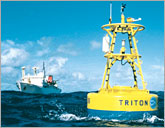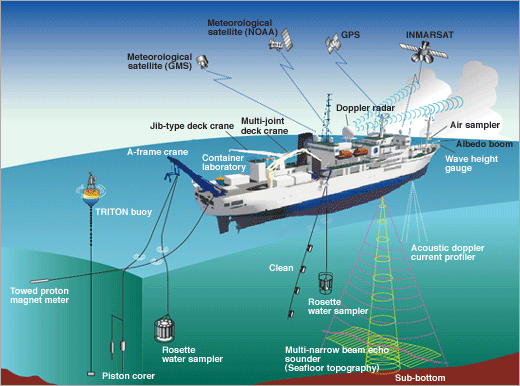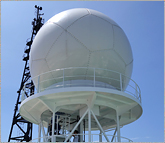MIRAI
Overview
MIRAI is a conversion of the former nuclear powered ship, MUTSU. The vessel was cut open and its reactor was removed completely in 1995. After non-usable parts and asbestos were also removed and a diesel engine was installed, the vessel was reborn as an oceanographic research vessel MIRAI on August 21, 1996.
MIRAI provides excellent navigational performance and resistance to ice. The vessel can conduct long-term observational studies over wide areas, and is used for oceanographic surveys primarily in the subtropic and subarctic regions of the Arctic, Pacific, and Indian Oceans. It is hoped that MIRAI will perform a role as an advanced international station for ocean-based, marine-Earth research as well as function as a base for transmitting various types of marine and Earth data.
Mission
- Determining the Thermal Cycle of the Ocean
The ocean controls the thermal balance of the Earth through heat exchange with the atmosphere and the circulation of seawater. Changes in water temperature and currents can produce anomalous weather conditions and climatic changes. MIRAI is used in efforts to clarify the mechanisms involved in changes in the ocean.
- Resolving the Material Cycle of the Ocean
Increased atmospheric CO2 leads to increases in global warming. However, mainly in storm regions, the ocean seems capable of absorbing most of the CO2 emitted into the atmosphere. MIRAI is employed in efforts to determine fluctuations in and the mechanisms of the exchange of CO2 and other substances between the atmosphere and the ocean, and is thereby useful in the prediction of global warming trends.
- Resolving the Oceanic Ecosystem
The oceanic ecosystem, which is composed of organisms such as plankton, is thought to affect the global environment. MIRAI will be used to clarify this relationship.
- Resolving Seafloor Dynamics
The sedimentary layers deposited on the seafloor record the history of Earth activity. By studying the morphology and structures of the seafloor, we plan to clarify past environmental changes and oceanic plate movements.
- Deployment of Oceanic Observation Buoys
To support the advancement of tasks 1 and 2 above (Determining the Thermal Cycle of the Ocean, and Resolving the Material Cycle of the Ocean), a total of 18 buoys (TRITON buoys) are deployed over a region that spans the Western Pacific Ocean and the Indian Ocean.


Characteristics
A large vessel able to perform observational studies over wide areas under rough weather conditions, MIRAI is one of the largest class of research vessels in the world.
Equipped with a hybrid type anti-rolling system and featuring an icebreaking structure, the vessel has the ability to conduct research in severe ocean conditions such as Arctic Ocean.
Equipped with large observation instruments
Equipped with Doppler radar, MIRAI is able to carry large observation instruments, including 14 large-scale buoys (TRITON buoys), as well as large water samplers and piston corers.
